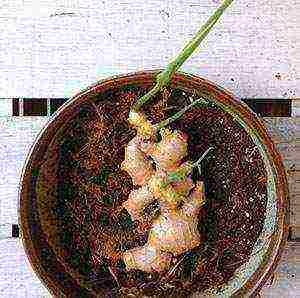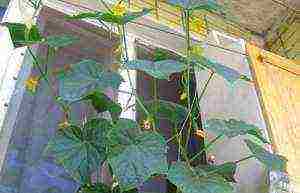Content
- 1 Houseplants are not small copies of garden forms
- 2 Potted Chrysanthemum Varieties
- 3 Chrysanthemum care at home
- 4 Reproduction of chrysanthemums at home
- 5 The main problems when growing a plant
- 6 Diseases and pests of indoor chrysanthemum
- 7 Lush blooms on a staggering scale
- 8 What to look for when buying
- 9 Wintering is most important
- 10 Light mode for potted chrysanthemums
- 11 Temperature regimes
- 12 Watering for potted chrysanthemums
- 13 Air humidity
- 14 Top dressing for pot stars
- 15 Pruning and shaping bushes
- 16 Potted chrysanthemum breeding methods:
- 17 Common problems and diseases:
- 18 Potted chrysanthemums are used for:
- 19 Fine chrysanthemums (cultivation and care)
- 20 How to grow chrysanthemums from seeds in your area?
- 21 Growing chrysanthemums from seeds using seedlings
- 22 Cutting and dividing the chrysanthemum bush
Luxurious inflorescences in autumn flower beds attract the eye and amaze with a variety of shades. Indoor chrysanthemum in a pot differs from its congeners in the open field in the compact shape of a spherical bush with a height of 20–40 cm. Breeders have bred several hybrids and varieties adapted to the lack of lighting and other indoor conditions.
Houseplants are not small copies of garden forms
"Home" chrysanthemums are not demanding to care, grow well, bloom profusely and multiply easily. In everyday life, it is customary to say "flowers", although the Compositae family has an inflorescence-basket. When buying, you should pay attention to the fact that there is a healthy chrysanthemum in a pot, care at home will then be much easier. A well-developed indoor plant will continue to bloom on the windowsill. Under favorable conditions, the buds can bloom almost without interruption for 2 years.
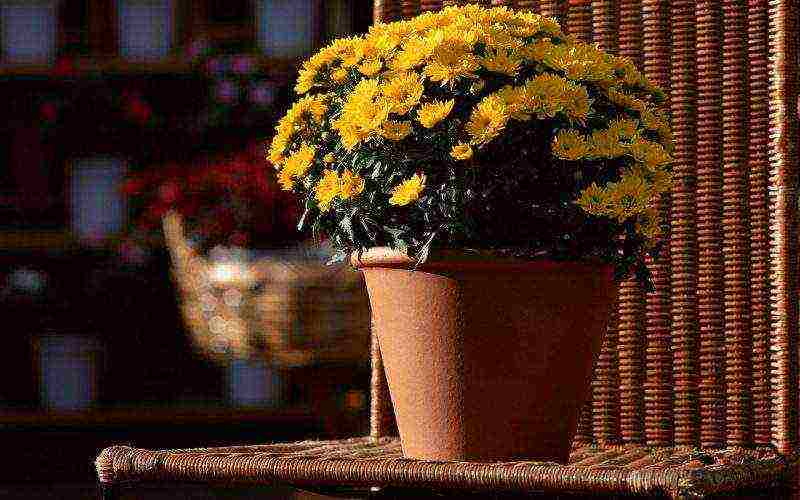
It should be noted that after independent propagation by cuttings or root suckers, new plants do not turn out to be as compact and dense as those purchased in the store.
Street chrysanthemums are sold in plastic containers. Such flowers are planted in open ground, or left in a container, used for container gardening, patio decoration, and house entrance. After flowering, the stems are cut, containers with roots are sent to the basement or loggia for the winter. If street chrysanthemum is kept indoors, its leaves will turn yellow and dry. These plants need fresh air and a certain lighting regime - the night is longer than the day.
Potted Chrysanthemum Varieties
Thanks to the efforts of breeders, geneticists and agrochemists, plants have been bred that can bloom profusely and for a long time in a room. In total, about 40 hybrid varieties of chrysanthemums have been created for indoor cultivation. The inflorescences can be smaller or the same size as those of open field plants. Varieties are often grouped by origin from one natural species.
Chrysanthemum indian
In nature, this is a relatively low herbaceous plant. The leaves are jagged, green-gray in color. The inflorescence is a basket resembling a chamomile with yellow petals and the same core. It is the ancestor of small-flowered hybrids for growing on windowsills and balconies.
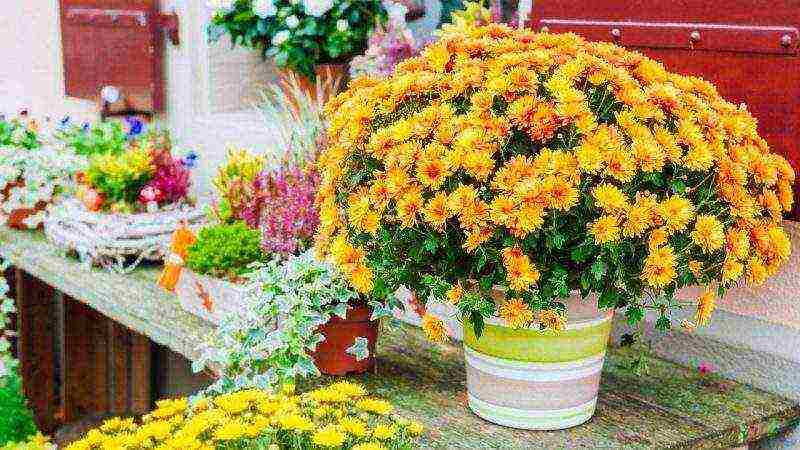
The Indian chrysanthemum was crossed with species that have white and pink inflorescences. Breeders, with the help of chemicals that affect growth, have obtained compact forms with a height of 20-25 cm. Today there are a large number of various forms and varieties that feel good in the room and are in high demand. The flower is liked and appreciated for its rich color and long flowering, which is especially attractive in the cold season.
Popular varieties of chrysanthemums in indoor floriculture:
- "Golden Gloria" - dense bushes with many large yellow inflorescences.
- "Old Gold" - plants with petals of an unusual reddish-bronze color.
- "Morifolium" is a variety with large, simple, semi-double and double inflorescences 5 cm in diameter.
Chrysanthemum Chinese or mulberry

A group of varieties and hybrids, for the creation of which several species were used. Plants for indoor floriculture have a compact shape, thin, highly branched stems 20–25 cm high. The leaves are deep green, 7 cm long and 4–5 cm wide. On the upper side of the leaf blade, pinpoint glands are noticeable. Inflorescences of Chinese chrysanthemums are simple, semi-double and double, of various sizes and colors.
Chrysanthemum care at home
They buy a plant in a flower shop or accept it as a gift. In any case, it is necessary to create conditions in the new room so that the buds do not fall off. Planting and caring for a chrysanthemum in a room is different from open ground and a greenhouse.
Lighting, temperature control
Light affects flowering and bud opening. The amount of light is suitable that is provided by placing the pot on the windowsill of plastic or wooden windows facing west and east. The hit of rays at noon can cause burns to the leaves, in this situation it is recommended to shade the plant. A young bush blooms with 6-8 hours of daylight in October or November (depending on the region).
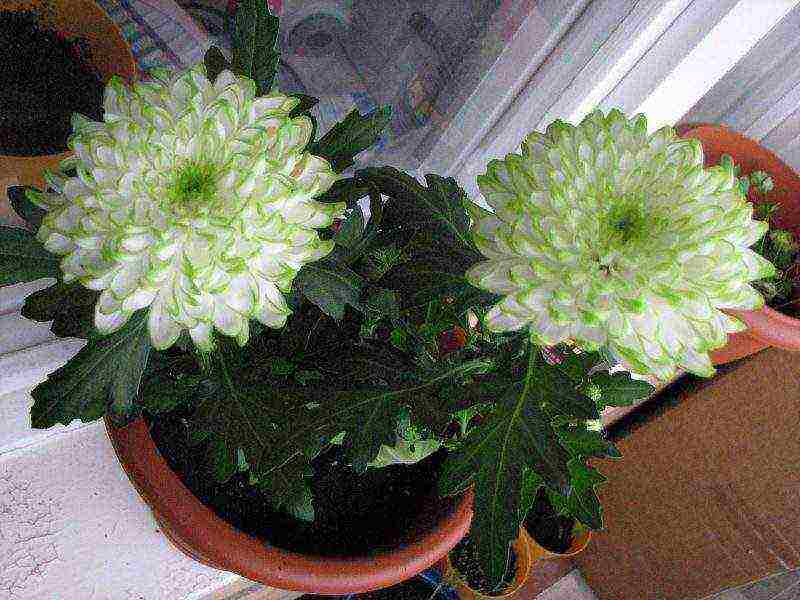
A comfortable temperature for a room chrysanthemum is 18–23 ° С. The variety, more demanding in terms of keeping conditions, reacts to the heat by dropping buds and leaves. It is advisable to spray the plant with water more often in the summer to reduce the temperature. You can leave in front of an open window, the chrysanthemum is not afraid of drafts.
Watering and feeding
The soil in the pot should always be moist. Indoor chrysanthemum prefers frequent irrigation, but not excessive. Stagnant water in a pot can lead to root rot, the spread of fungal and bacterial diseases.

Recommendations for flower growers:
- The substrate should not be allowed to dry out.
- In autumn and winter, watered once a week in the morning.
- Watering in spring and summer is carried out 2 times a week in the evening.
- In the heat, water is sprayed near indoor plants to reduce the air temperature.
- Used for watering and spraying the settled water. If it is tough, then white bloom accumulates on the soil surface.
- Avoid getting drops on flowers.
Profusely blooming chrysanthemums require more frequent fertilization. Liquid dressing is carried out once a week until the end of flowering. It is advisable to use complex fertilizers with the addition of trace elements. Actively growing shoots need nitrogen; during budding and flowering, more potassium and phosphorus are required. The potted plant is fed about 12 hours after watering.
Pruning and shaping the bush
The purchased plant retains its original shape for a long time. If in the future you do not regulate the growth of shoots, then several long stems appear, which reduces decorativeness.
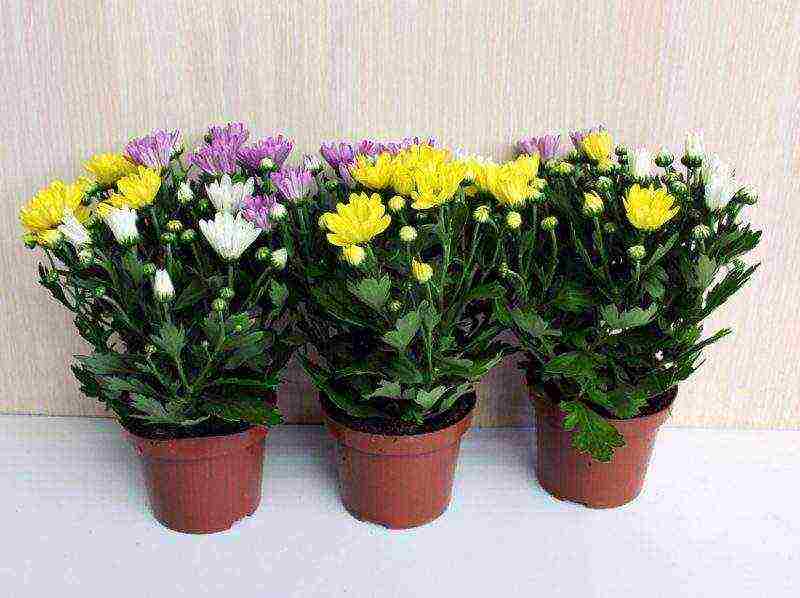
Recommendations:
- Pinching of rapidly growing shoots is performed. Small-flowered chrysanthemums will need 2 or 3 treatments.
- Large-flowered hybrids can be formed in the form of a tree by shortening the main shoot and cutting off the lower branches.
- Pinching buds that are starting to wither helps to increase the number of new buds.
Pruning is needed if flowering is delayed. Selective pinching of the tops of the flower stalks will ensure the flow of nutrients to the remaining buds.
Plant transplant
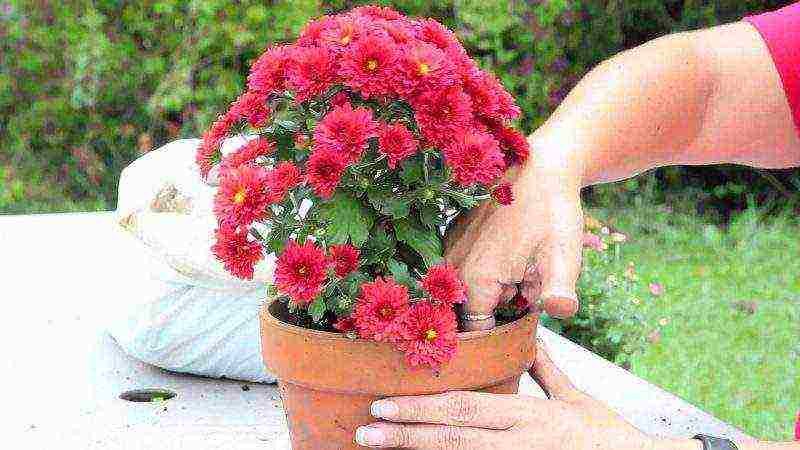
Young and old plants need to renew the substrate. They are transferred into a deeper and wider pot once a year - in spring or early summer. The substrate is prepared from garden soil, peat and humus (1: 1: 1). You can use ready-made potting soil.
For chrysanthemums, such indicators as a loose structure, lightness, moisture capacity and soil nutritional value (mechanical composition and fertility) are important.
After transplanting, young offspring are covered with a plastic cup, adult plants - with a plastic bag. Provide diffused lighting at first, do not forget about watering.
Features of care after flowering
After the end of flowering, weak and diseased shoots are removed. Some growers recommend pruning the stems, leaving short areas above the surface of the substrate. After that, the soil is watered and the pot is removed to a cool, dry place until spring.
You can do without radical pruning at the root, leave the chrysanthemum as it was on the windowsill in the room. The third option: to stimulate the growth of shoots and the formation of a compact bush, pruning is done, but the pot is not removed. A strong chrysanthemum in the same season will start up new shoots and bloom.
Reproduction of chrysanthemums at home
Adult chrysanthemums "acquire" root suckers (babies). Young plants can be grown from these additional shoots. Root offspring are carefully separated from the mother bush, planted in small containers. It is necessary to keep the depth of the plant at the same level. To do this, increase the height of the drainage layer or place the roots higher. Cover the seedlings with a plastic cup. In the autumn of the same year, young plants will bloom.
Rooting stem cuttings:
- Young shoots are cut from an adult plant.
- Fill a clear plastic cookie or cake container with well-rinsed sand.
- Cuttings are planted, covered with a lid from the container.
- After the formation of roots and the appearance of new leaves, young plants are transplanted into a pot.
Chrysanthemums are difficult to grow from seeds. Hybrid varieties are often sterile. Usually, during seed propagation of chrysanthemums, varietal characteristics are not preserved.
The main problems when growing a plant
Why do the leaves turn yellow?

Chrysanthemum leaves change color due to improper care and diseases. Yellowing may be due to a lack of light, water, hot air from the radiator. The appearance of spots of a grayish-yellow or brown color with a yellow border is a sign of a fungal infection. If yellowing is associated with poor care, then it is easier to correct this deficiency than to cure plant diseases.
Chrysanthemum does not bloom - why?
Typical reasons for the lack of buds and flowers are lack or excess of lighting. Chrysanthemum is a short day plant. If there is artificial lighting in the room in the morning and in the evening, then biorhythms go astray. Another reason is associated with the rapid growth of stems and leaves, which happens with an excess of fertilizing and no pruning.
Diseases and pests of indoor chrysanthemum
The plant is prone to rust, powdery mildew, gray and black rot. For these fungal infections, they are treated with fungicides for indoor plants. Chrysanthemum is damaged by aphids, black midges sciarids, soil mites, springtails. The leaves are treated with a solution of the drug Aktellik, Fitoverm or Bazudin. For spraying, the flowers are taken out onto the balcony. Window sills, window frames are washed with a solution of soda and soap.
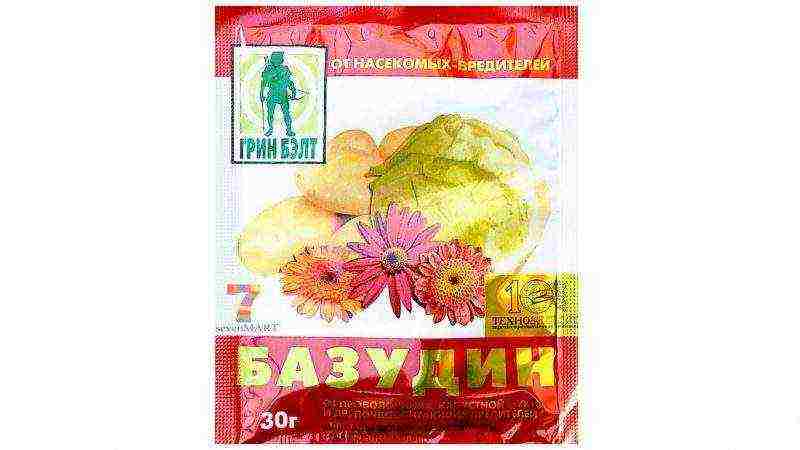
After the death of the pests, the top layer of the soil in the pot is changed to a depth of 2 cm. It is recommended to carefully consider the choice of the substrate.Typically, pathogens and plant pests are found in the land brought from the garden.
It is very important to isolate the affected plant from the rest of the green pets in the room, and to carry out pest and disease control in a timely manner. Then the chrysanthemums will remain healthy, will delight with flowering for a long time.
It is impossible not to succumb to the charm of potted chrysanthemums. Huge "sheaves" or balls, covered with so many flowers that seem almost like pillows on the eve of autumn, flood the markets and flower shops. A more popular and common seasonal pot is not found. Chrysanthemums are used to decorate gardens and terraces, facades and front gardens, balconies and apartments. All potted chrysanthemums have one thing in common - low winter hardiness. She determines the specifics of the cultivation of the main autumn soloists.
Lush blooms on a staggering scale
Chrysanthemums are so popular at the end of the season not only because the color palette perfectly represents the so-called autumn palette. The colors of the chrysanthemum flowers really perfectly emphasize the crimson-fiery autumn range. But no color nuances can overshadow the main thing - relentless and very long flowering, unique in its scale and abundance. In addition, potted chrysanthemums are very diverse in varietal colors.
Potted chrysanthemums that cannot withstand winter frosts can be grown in two forms:
- Seasonal indoor or balcony annual;
- A perennial that is taken indoors for the winter and cut off after a dormant period, stimulating growth.
Potted chrysanthemums can also be planted in open soil - but then they will need to be dug up and transferred to pots for the winter. Therefore, they are more often grown in container culture.
Chrysanthemums in container form are different from their garden counterparts. They develop in the form of dense cushion-shaped bushes, formed by pruning and bred specifically to obtain specimens of increased density. Numerous shoots are woody, dotted with simple carved leaves, which often do not create a particularly impressive crown, but only serve as a background for flowers. They bloom at the tops of the shoots in such numbers that they create solid caps.
Classic inflorescences-baskets in potted chrysanthemums are both simple and densely double, with wider or very narrow reed petals. And the color, which includes all the warm shades of white-cream, yellow, orange, red, purple, brown palette, can be both monochromatic and combined and even contrasting.
New in fashion today blue-colored chrysanthemums and original green-colored plants, as well as varieties with dazzling acrylic colors. Even more popular are large-flowered varieties - hybrids with spherical, pompom, anemone-shaped inflorescences, which adorn gardens during all warm months, and bloom in indoor culture all autumn and winter.
Potted chrysanthemums are different in size. For indoor culture and growing indoors, choose mini-varieties, the height of which does not exceed 30 cm. But the intended for open air specimens are twice as large, sometimes reaching 1 meter in height and diameter. Potted chrysanthemums are standard, and formed in the form of a ball, and squat, and even sloping. In short, there is plenty to choose from. Moreover, indoor chrysanthemums are sold in bloom throughout the year, and garden chrysanthemums are now on the shelves in spring, and are specially driven out at atypical times. But such early maturing plants are just a temporary decoration of both the house and the garden, which will have to be thrown away. If you want to preserve chrysanthemums, buy them during their typical flowering times, from late summer through fall.When buying, be sure to specify exactly what conditions the chrysanthemums are accustomed to and how they need to be grown: sometimes chrysanthemums of local distillation require specific care.
In order for potted chrysanthemums to bloom truly profusely, they will need simple, but constant care and rather specific conditions. They bloom luxuriantly at low temperatures, and this requirement can be ignored only when grown as an annual or by a callout in fresh air. Watering and feeding are frequent, but other than them, no difficulties with chrysanthemums usually arise.
What to look for when buying
Chrysanthemums in the markets are presented in such a quantity that it is not easy to choose a single bush. But try to be very careful, because success directly depends on how picky you are. Never buy chrysanthemums with fully blooming inflorescences - specimens in which inflorescences have bloomed no more than half will bloom better and longer. The bushes should be fully formed, strong, the shoots should be woody from below, and the leaves should be healthy. Please note that yellowing of foliage, spots on leaves and shoots are unacceptable.
Wintering is most important
Chrysanthemums develop cyclically, with a period of complete rest. It is the difficulty of wintering that makes many people simply throw out the plants after flowering is complete. If you have the opportunity to provide the necessary conditions, do not rush to doom the plant to death.
If you want to keep your beautiful chrysanthemum in a pot and admire its flowering from year to year, then you will have to take care of the correct wintering. Both indoor miniature and real garden potted chrysanthemums should winter in the same way (in many ways, this is why they are not divided into separate groups). The dormant period begins immediately after flowering. The bushes must be ruthlessly cut to short stumps and immediately transferred to the coldest room in which the temperature does not drop below 0, but will be as close as possible - from 2 to 5 degrees Celsius, ideally.
At this time, chrysanthemums are hardly watered or fed, leaving them alone until the first signs of spilling appear. As soon as the chrysanthemums start to grow, they are immediately transferred to a cool place and into bright light, transplanted into a new pot or replace the substrate and begin to water and feed.
But that's not all: in order for the chrysanthemum to bloom as abundantly next year, it is desirable that it be in cool conditions and at the stage of flowering. If the plant is in a hot room, it will not bloom profusely.
Light mode for potted chrysanthemums
Chrysanthemums are crops for which a short daylight hours are enough for abundant flowering. But this does not mean at all that they are content with shaded locations. Throughout the entire period of active development, including flowering, chrysanthemums need to be provided with the sunniest and brightest locations where the plants will not suffer from midday rays or will be shaded from them by neighboring potted plants. In winter, chrysanthemums are kept in dark rooms (with the exception of specimens that continue to bloom, which are transferred to the lightest locations of the rooms and plan to be thrown away after flowering)
Temperature regimes
Potted chrysanthemums (both garden and indoor) love coolness, especially during the flowering stage. These are not the most heat-resistant crops that are comfortable only in typical autumn conditions. The higher the air temperature, the faster the inflorescences fade and the less chrysanthemums produce new buds. That is why even miniature indoor plants are best kept outdoors during flowering. The optimal temperature regime for potted chrysanthemums is from 10-15 to 17-20 degrees Celsius or a little more.If chrysanthemums are in temperatures above 21-22 degrees during the flowering period, they will not be able to normally lay buds for flowering next year, and even cold wintering will not give the expected effect.
Watering for potted chrysanthemums
Autumn beauties need regular and fairly frequent watering. They do not like excess moisture, but they cannot stand drought either. To achieve optimal hydration, immediately after the procedure, you need to drain excess water from the pallets, and let the top layer of soil dry before the next watering.
Air humidity
Frequent watering is fully compensated by the absence of the need to humidify the air. To make the plant bloom more beautifully, and the foliage to be more attractive and thick, chrysanthemums can be sprayed periodically. But at the same time, droplets of moisture should not accumulate on the buds and inflorescences, and even more so they should not get very wet. The exception is chrysanthemums blooming in the rooms in winter, which need compensation for the operation of central heating systems.
Top dressing for pot stars
For such an abundant flowering, chrysanthemums need access to nutrients in very large quantities. The soil and the plant itself is severely depleted, so these plants are fed in fact as garden annuals - very often. It is better to reduce the dose of fertilizers, but feed them themselves every 1-2 weeks. When signs of flowering end, be sure to slowly reduce the number of dressings. Stop fertilizing before wintering out. Feeding is resumed 2 weeks after transplantation.
For chrysanthemums, it is better to use special fertilizer mixtures or universal mixtures for flowering plants. If you use conventional fertilizers, then during the formation of the bush, apply more nitrogen, and with the appearance of buds, more potassium and phosphorus.
Pruning and shaping bushes
For potted chrysanthemums, not one, but several scraps are needed:
- removal of wilting inflorescences that need to be removed from the bushes as quickly as possible;
- pinching the tops to form a dense and compact crown, which is carried out in spring and early summer 2-3 times;
- if desired, limit the height of the bushes or stimulate the second wave of flowering in winter - restraining pruning by 1/3 of the shoots;
- pruning before wintering, which is carried out to small stumps, removing all aerial parts.
Substrate for potted chrysanthemums: any soil mixture with a loose texture, admixture of sand and transfer (except sour).
Transplant time: perennial chrysanthemums are transplanted annually, old bushes - every two years immediately after signs of growth appear in the spring. Drainage is laid at the bottom of the tanks, the level of deepening is kept the same.
Potted chrysanthemum breeding methods:
- Seeds that germinate well, but require many years of growing seedlings and a very long wait for flowering.
- Separation of bushes, which is carried out on old chrysanthemums in the spring or after flowering.
- By cuttings in spring or summer. Apical cuttings root both in the ground and in water, they require planting 2-3 copies in one pot and pruning at first to 10-15 cm, and then in the form of constant pinching as they grow to form a crown.
Common problems and diseases:
- various rot, quickly spreading when the inflorescences get wet and waterlogged;
- absence or poor flowering due to temperature disturbances and poor feeding.
Control methods: care correction
Potted chrysanthemums
Potted chrysanthemums are used for:
- interior decoration, accent and color spot in the autumn-winter setting of the house;
- a spectacular guardian plant at the gate, front door, on the bends of the path;
- to create interiors of terraces and recreation areas in the fall;
- for decorating autumn flower beds and ridges, masking voids and introducing beautifully flowering accents into boring corners of the garden;
- in still lifes and decorative groups to decorate resting places in the garden;
- for the decoration of balconies and verandas.
Chrysanthemums adore decor and fanciful containers, love the company of other potted plants and do not get lost even in the most colorful collection.
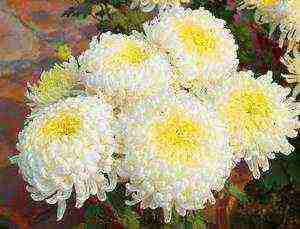 Chrysanthemums are one of the favorite plants of flower growers. This is due not only to their beautiful decorative appearance, but also to their relatively easy care. They decorate any flower garden until late autumn.
Chrysanthemums are one of the favorite plants of flower growers. This is due not only to their beautiful decorative appearance, but also to their relatively easy care. They decorate any flower garden until late autumn.
Fine chrysanthemums (cultivation and care)
Growing chrysanthemums is not difficult even for inexperienced gardeners. Well-lit areas with fertile soil of average texture are suitable for them. The soil should not contain excess organic fertilizers. When choosing a place for chrysanthemums, remember that they do not tolerate stagnant water. This plant is distinguished by its cold resistance and drought resistance.
Chrysanthemums reproduce by cuttings and division of mother liquors. Recently, the method of growing these flowers by sowing seeds in open ground and for seedlings has become increasingly used. Most often, this breeding method is used for breeding rare varieties of chrysanthemums. Some experienced florists grow flowers by sowing seeds before winter.
Chrysanthemums are considered quite resistant plants to diseases and pests, but despite this, they can be affected by:
- Powdery mildew, a sign of which is a white powdery coating on all parts of the plant. This disease requires the introduction of a sufficient amount of phosphorus and potassium fertilizers, regular removal of old leaves and root watering without moisture entering the leaves.
- Nematodosis, in which light spots appear on the leaves, limited by veins. Then they turn black and dry. Control methods: soil treatment with steam, disinfection with formalin or carbothion. Sick bushes are kept in hot water (55 ° C) for 5 minutes. After this treatment, they are planted in disinfected soil.
- A field or meadow bug that feeds on plant juices. Control methods: spraying with various insecticides (Karbofos, Decis, Fury).
- A spider mite that damages the leaves from the underside. Control methods: spraying with "Karbofos".
The following forms of chrysanthemums are grown in flower beds:
- Small-flowered, which have many shoots, crowned with numerous (up to 800 pcs.) Small inflorescences, 2-9 cm in diameter.
- Large-flowered, reaching a height of 1-1.2 meters. On their stems there are 1-10 large inflorescences.

Some growers use the biological characteristics of certain varieties of chrysanthemums to grow them in the winter under indoor conditions. To obtain flowering plants in January-March, late-flowering varieties with a budding period of 12-14 weeks are used. This method of growing chrysanthemums is very costly as it uses additional lighting.
How to grow chrysanthemums from seeds in your area?
The cultivation of annual and perennial chrysanthemums has recently become more and more popular. They can be obtained by sowing seeds in open ground at the end of April or in May. On the prepared beds, holes are made with an interval of 20-25 cm. Fill them with warm water and put 2-3 seeds each. The holes covered with earth are covered with a vegetable film. Thanks to it, the soil in the hole will be well warmed up and moistened, which contributes to the fastest germination of seeds.

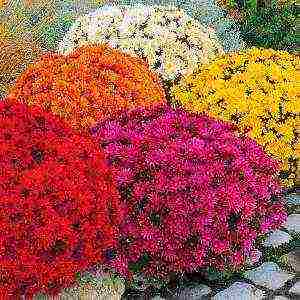 When the first shoots appear, the shelter is removed. Caring for young chrysanthemums consists in regularly loosening the soil, removing weeds and applying additional fertilizing. A week after germination, they can be fed with liquid fertilizer, highly diluted with water. For this, preparations such as "Rainbow" and "Ideal" are suitable.
When the first shoots appear, the shelter is removed. Caring for young chrysanthemums consists in regularly loosening the soil, removing weeds and applying additional fertilizing. A week after germination, they can be fed with liquid fertilizer, highly diluted with water. For this, preparations such as "Rainbow" and "Ideal" are suitable.
When the seedlings reach 5-10 cm in height, one plant is left in the hole. For this, the strongest specimens are chosen. The rest of the seedlings can be carefully removed from the ground and planted elsewhere. Chrysanthemums bloom 40-50 days after the seedlings appear.
Growing chrysanthemums from seeds using seedlings
Growing chrysanthemums from seeds can also be done through seedlings. At the same time, flowering occurs much faster. Perennial chrysanthemums are grown only in this way. In February-March, seeds are sown in small boxes filled with nutritious soil. For its preparation, in equal proportions, you can take soil from a greenhouse, humus and peat. Before sowing the seeds, the soil mixture is sieved and steamed at a temperature of about 120 ° C. Ready-made soil for flowering plants is also suitable for seedlings.
Drainage must be poured at the bottom of the boxes (expanded clay, small stones, broken red brick). Wet soil is poured on top of it. Seeds are poured onto its surface.
At the same time, there is a strict rule for their termination:
- the seeds of annual chrysanthemums are sprinkled with a layer of soil of 0.5 cm;
- seeds of perennial varieties are left on the surface of the soil, only by pressing them with the palm of your hand.
The earth is moistened with a spray bottle. The boxes are covered with plastic wrap. They are placed in a warm place where the temperature is 23-25 ° C. Crops are regularly checked, moistened and aired. The soil should not dry out. Shoots appear after 10-14 days. After that, the boxes with seedlings are placed in a bright place.
When 2-4 leaves appear, the plants dive into cups or pots. This will protect the chrysanthemum root system from damage during transplantation. Seedlings that are very elongated and weakened are not suitable for diving. After completing this procedure, the plants are sprayed with a solution of "Zircon" or "Epin-Extra". These drugs help the seedlings take root faster.
Caring for young chrysanthemums is simple. It consists in maintaining an optimal temperature of 16-18 ° C, regular watering and feeding. Plants are fertilized once every 2 weeks. If there is insufficient natural light, you may need additional. With proper care, the seedlings reach 15-20 cm in height in 1.5 months. When the air outside warms up to 15-18 ° C, the plants are transferred to the greenhouse. After the end of the threat of spring frosts in May, chrysanthemums are planted in a permanent place. Immediately after landing on the flower beds, the tops of the seedlings are pinched. When the lateral shoots reach a length of 15-20 cm, the pinching is repeated. Thanks to this procedure, dense, compact bushes are obtained, strewn with numerous inflorescences.
Cutting and dividing the chrysanthemum bush
The main method of reproduction of chrysanthemums is considered vegetative - cuttings. The breeding process begins with the selection of the best mother plants. After flowering, they are dropped in greenhouses or planted in boxes and left in a cool, dry place with normal lighting. Then vernalization is carried out - the content of mother liquors at a temperature of 1-4 ° C for 2-4 weeks. Then they are brought into a warm, well-lit room. After that, root shoots begin to grow actively on the mother liquors. It is cut into cuttings when 2-3 internodes are formed. They are planted in prepared boxes. The optimum temperature for their development is 16-18 ° C.
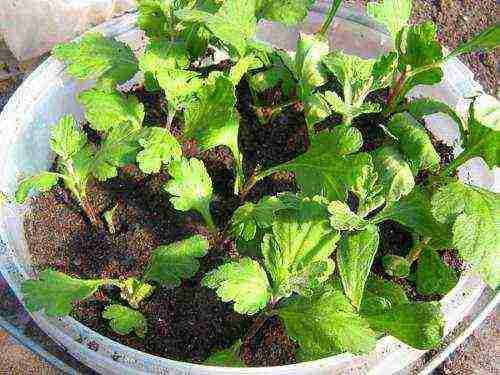
Reproduction by dividing the bush is less productive, but the easiest. Small-flowered chrysanthemums are most often used for division. The bushes are transplanted after 2 years, dividing them into several parts with young shoots.
Growing chrysanthemums at home (video)
